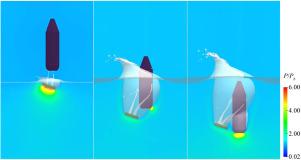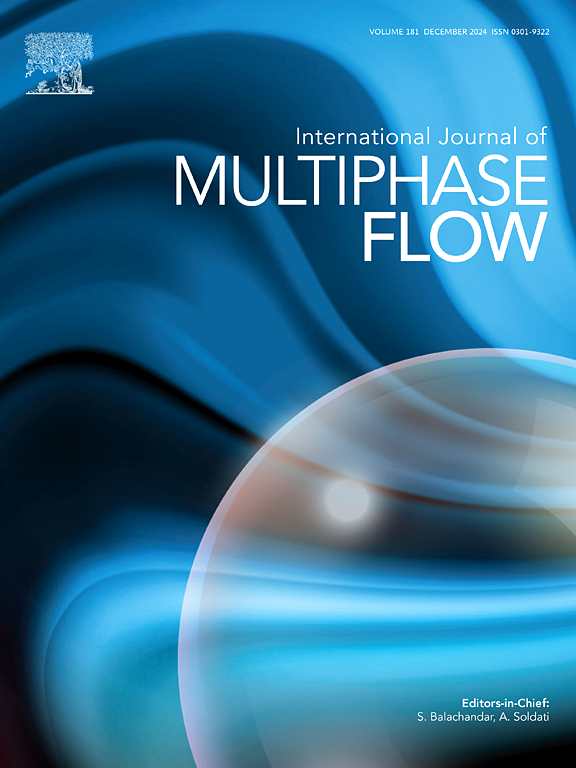基于导车的主车垂直入水减力研究
IF 3.8
2区 工程技术
Q1 MECHANICS
International Journal of Multiphase Flow
Pub Date : 2025-10-09
DOI:10.1016/j.ijmultiphaseflow.2025.105473
引用次数: 0
摘要
在入水过程中穿越空气-水界面会使车辆受到严重的冲击力,造成结构振动、大变形和运动不稳定等重大风险。为了减轻这些影响,本研究提出了一种串联入水策略,利用穿孔先导车辆来减少冲击力。主车辆垂直穿透由先导车辆形成的空腔壁,从而衰减冲击力。采用δ-SPH方法对水进入过程进行了模拟,并与实验结果对比验证了该方法的收敛性和准确性。通过对主空腔演化、压力分布和水射流冲击的分析,阐明了串联策略的减力机理。此外,还研究了前车初始速度和姿态角对主车冲击力的影响。结果表明,减少峰值轴向力高达90%,同时确保避免碰撞。增加车辆之间的相对姿态角和初始速度比可以进一步降低碰撞风险。这些发现为开发高效可行的减冲击力技术提供了有价值的见解。本文章由计算机程序翻译,如有差异,请以英文原文为准。

Research on leading-vehicle-based force reduction for main vehicle in vertical water entry
Crossing the air–water interface during water entry subjects vehicles to severe impact forces, posing significant risks such as structural vibration, large deformation, and motion instability. To mitigate these effects, this study proposes a tandem water entry strategy utilizing a perforated leading vehicle to reduce impact forces. The main vehicle vertically penetrates the cavity wall formed by the leading vehicle, thereby attenuating impact forces. The water entry process is simulated using the delta-smoothed particle hydrodynamics (-SPH) method, whose convergence and accuracy are verified against experimental results. Analysis of main cavity evolution, pressure distribution, and water-jet impacts elucidates the force reduction mechanism of the tandem strategy. Furthermore, the influences of the leading vehicle’s initial velocity and attitude angle on the main vehicle’s impact forces are investigated. Results demonstrate a reduction in peak axial force of up to 90% while ensuring collision avoidance. Increasing the relative attitude angle between vehicles and the initial velocity ratio further minimizes collision risk. These findings offer valuable insights for developing efficient and operationally feasible impact force reduction techniques.
求助全文
通过发布文献求助,成功后即可免费获取论文全文。
去求助
来源期刊
CiteScore
7.30
自引率
10.50%
发文量
244
审稿时长
4 months
期刊介绍:
The International Journal of Multiphase Flow publishes analytical, numerical and experimental articles of lasting interest. The scope of the journal includes all aspects of mass, momentum and energy exchange phenomena among different phases such as occur in disperse flows, gas–liquid and liquid–liquid flows, flows in porous media, boiling, granular flows and others.
The journal publishes full papers, brief communications and conference announcements.

 求助内容:
求助内容: 应助结果提醒方式:
应助结果提醒方式:


